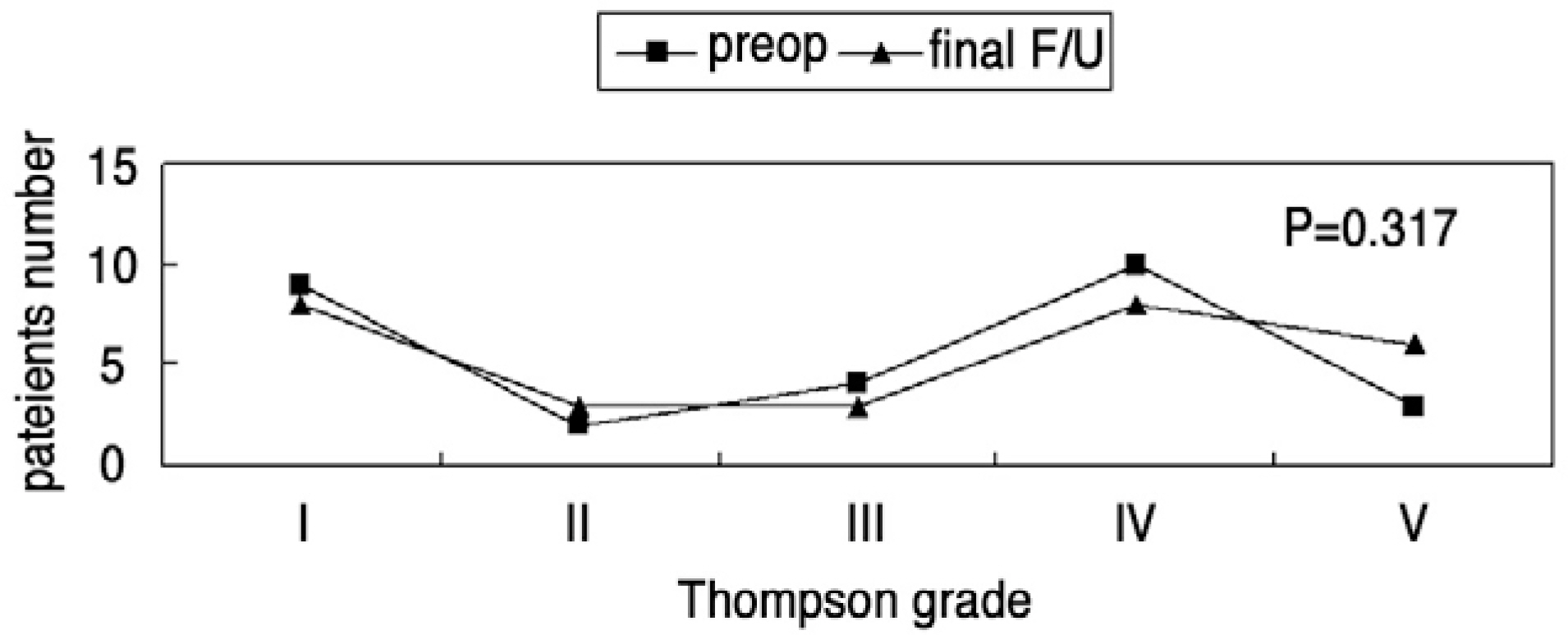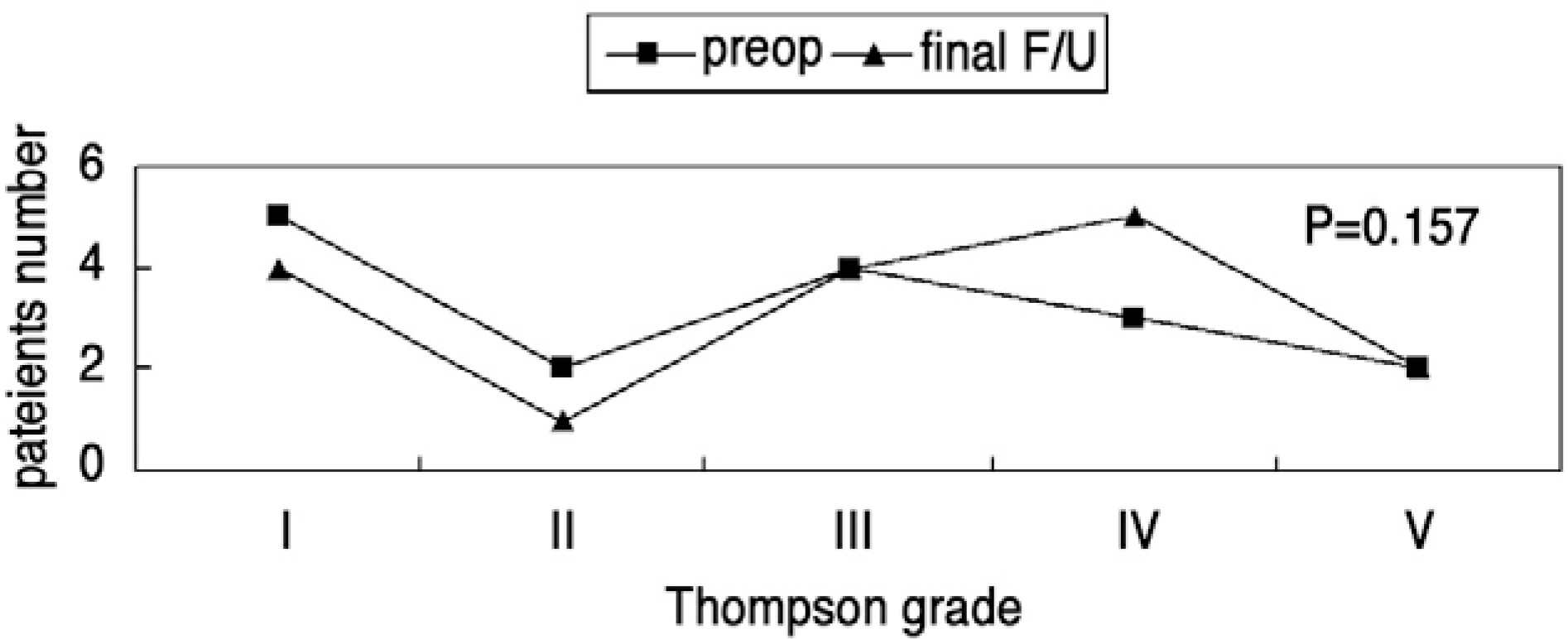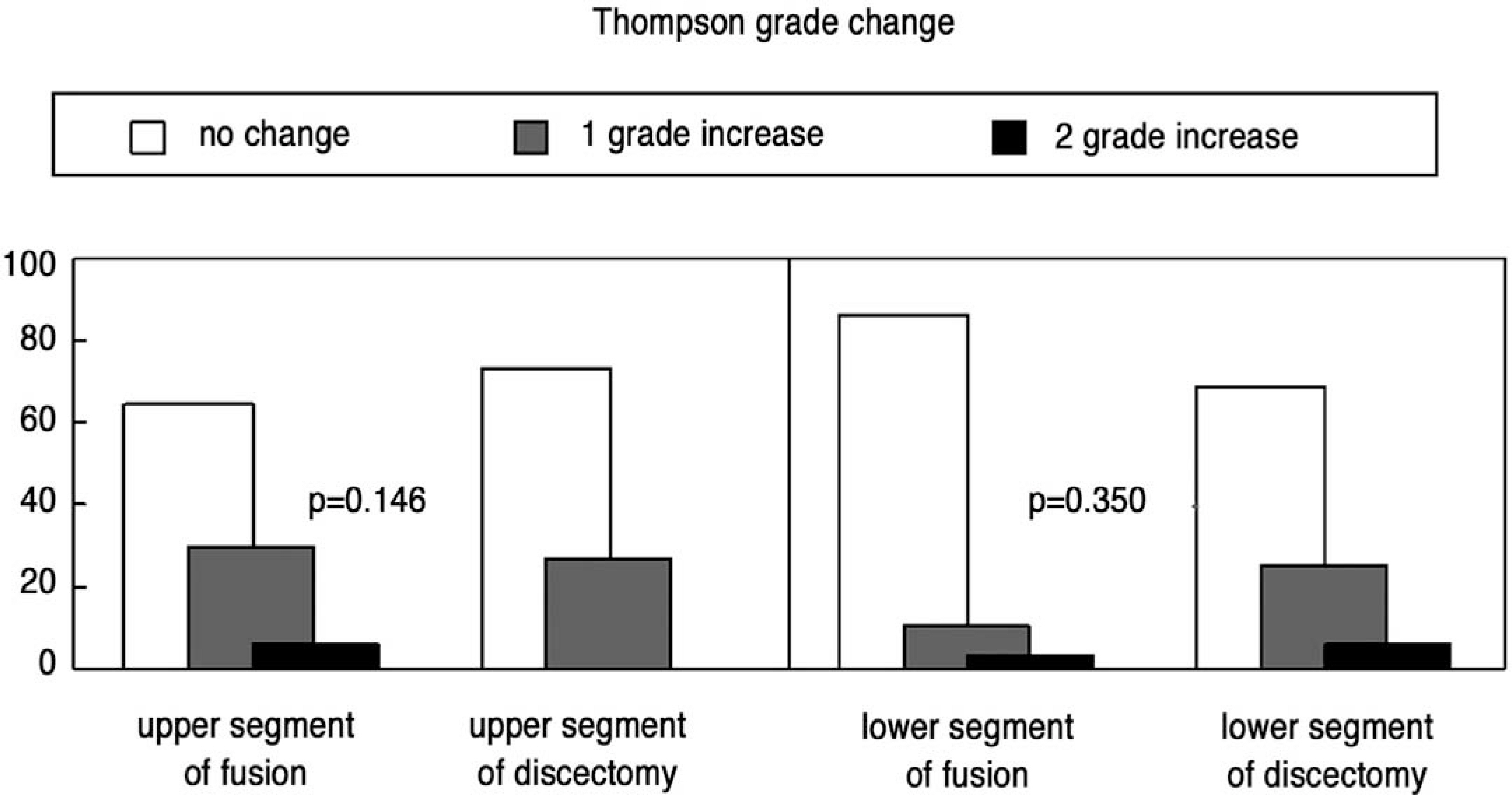J Korean Soc Spine Surg.
2008 Jun;15(2):81-86. 10.4184/jkss.2008.15.2.81.
MRI Assessments of Adjacent Disc Degeneration Following Lumbar Fusion
- Affiliations
-
- 1Department of Orthopedic Surgery, Ajou University School of Medicine, Suwon, Korea. bone@ajou.ac.kr
- KMID: 2097836
- DOI: http://doi.org/10.4184/jkss.2008.15.2.81
Abstract
-
STUDY DESIGN: Retrospective case-control study
OBJECTIVE
To use MRI to assess intervertebral disc degeneration at adjacent levels after spinal fusion and after discectomy. SUMMARY OF LITERATURE REVIEW: Degeneration of adjacent intervertebral discs following lumbar spinal fusion is one of the principal reasons for considering motion preservation techniques, such as placement of an artificial disc. Much attention has recently been directed toward disc morphometric studies using MRI.
MATERIALS AND METHODS
Fifty-six patients who underwent spinal surgery for lumbar degenerative disease and who underwent a minimum of 2 years of follow-up MRIs were included in this study. Thirty-four patients were included in the lumbar fusion study group, and 22 patients were included in the discectomy control group. The MRI Thompson classification was used to grade both upper and lower adjacent disc degeneration preoperatively and at the time of last follow-up.
RESULTS
There were significant changes in Thompson degenerative grade in the upper adjacent levels for both the fusion group patients and in the discectomy group patients. However, there was no statistically significant difference between the two groups with regard to either the upper or lower adjacent levels (p=0.146 and 0.350, respectively).
CONCLUSIONS
In this short-term study comparing MRI outcomes in spinal fusion and discectomy patients, no significant difference in adjacent disc degeneration was observed between the two group.
Keyword
MeSH Terms
Figure
Reference
-
1). Hilibrand AS, Robbins M. Adjacent segment degeneration and adjacent segment disease: the consequences of spinal fusion? Spine J. 2004; 4:190–194.
Article2). Lee CK, Langrana NA. Lumbosacral spinal fusion: a biomechanical study. Spine. 1984; 9:574–581.
Article3). Luk KD, Chow DH, Evans JH, Leong JC. Lumbar spinal mobility after short anterior interbody fusion. Spine. 1995; 20:813–818.
Article4). Akamaru T, Kawahara N, Tim Yoon S, et al. Adjacent segment motion after a simulated lumbar fusion in different sagittal alignments: a biomechanical analysis. Spine. 2003; 28:1560–1566.5). Little JS, Ianuzzi A, Chiu JB, Baitner A, Khalsa PS. Human lumbar facet joint capsule strains: II. Alteration of strains subsequent to anterior interbody fixation. Spine J. 2004; 4:153–162.
Article6). Weinhoffer SL, Guyer RD, Herbert M, Griffith SL. Intradiscal pressure measurements above an instrumented fusion. A cadaveric study. Spine. 1995; 20:526–531.7). Cunningham BW, Kotani Y, McNulty PS, Cappuccino A, McAfee PC. The effect of spinal destabilization and instrumentation on lumbar intradiscal pressure: an in vitro biomechanical analysis. Spine. 1997; 22:2655–2663.8). Phillips FM, Reuben J, Wetzel FT. Intervertebral disc degeneration adjacent to a lumbar fusion. An experimental rabbit model. J Bone Joint Surg Br. 2002; 84:289–294.9). Ha KY, Schendel MJ, Lewis JL, Ogilvie JW. Effect of immobilization and configuration on lumbar adjacent-segment biomechanics. J Spinal Disord. 1993; 6:99–105.
Article10). Olsewski JM, Schendel MJ, Wallace LJ, Ogilvie JW, Gundry CR. Magnetic resonance imaging and biological changes in injured intervertebral discs under normal and increased mechanical demands. Spine. 1996; 21:1945–1951.
Article11). Goto K, Tajima N, Chosa E, et al. Effects of lumbar spinal fusion on the other lumbar intervertebral levels (three-dimensional finite element analysis). J Orthop Sci. 2003; 8:577–584.
Article12). Chen CS, Cheng CK, Liu CL, Lo WH. Stress analysis of the disc adjacent to interbody fusion in lumbar spine. Med Eng Phys. 2001; 23:483–491.
Article13). Kumar N, Judith MR, Kumar A, Mishra V, Robert MC. Analysis of stress distribution in lumbar interbody fusion. Spine. 2005; 30:1731–1735.
Article14). Hambly MF, Wiltse LL, Raghavan N, Schneiderman G, Koenig C. The transition zone above a lumbosacral fusion. Spine. 1998; 23:1785–1792.
Article15). Aota Y, Kumano K, Hirabayashi S. Postfusion instability at the adjacent segments after rigid pedicle screw fixation for degenerative lumbar spinal disorders. J spinal disord. 1995; 8:464–473.
Article16). Lehmann TR, Spratt KF, Tozzi JE, et al. Long-term follow-up of lower lumbar fusion patients. Spine. 1987; 12:97–104.
Article17). Penta M, Sandhu A, Fraser RD. Magnetic resonance imaging assessment of disc degeneration 10 years after anterior lumbar interbody fusion. Spine. 1995; 20:743–747.
Article18). Rahm MD, Hall BB. Adjacent segment degeneration after lumbar fusion with instrumentation: A retrospective study. J Spinal Disord. 1996; 9:392–400.19). Ghiselli G, Wang JC, Bhatia NN, Hsu WK, Dawson EG. Adjacent segment degeneration in the lumbar spine. J Bone Joint Surg Am. 2004; 86:1497–1503.
Article20). Ahn DK, Lee S, Jeong KW, Choi DJ, Cha SK, Cho KH. Degenerative change of adjacent segments according to the fusion method after L4-5 segmental fusion in the lumbar spine. J Kor Orthop Assoc. 2006; 41:281–287.21). Park P, Garton HJ, Gala VC, Hoff JT, McGillicuddy JE. Adjacent segment disease after lumbar or lumbosacral fusion: review of the literature. Spine. 2004; 29:1938–1944.
Article22). Thompson JP, Pearce RH, Schechter MT, Adams ME, Tsang IK, Bishop PB. Preliminary evaluation of a scheme for grading the gross morphology of the human intervertebral disc. Spine. 1990; 15:411–415.
Article23). Landis RJ, Koch GG. The measurement of observer agreement for categorical data. Biometrics. 1997; 33:159–174.
Article24). Van Horn JR, Bohnen LM. The development of discopathy in lumbar discs adjacent to a lumbar anterior interbody spondylodesis. A retrospective matched-pair study with a postoperative follow-up of 16 years. Acta Orthop Belg. 1992; 58:280–286.25). Seitsalo S, Schlenzka D, Poussa M, Osterman K. Disc degeneration in young patients with isthmic spondylolisthesis treated operatively or conservatively: a long-term follow-up. Eur Spine J. 1997; 6:393–397.
Article26). Ahn DK, Lee S, Jeong KW, Park JS, Cha SK, Park HS. Adjacent segment failure after lumbar spine fusion-controlled study for risk factors. J Kor Orthop Assoc. 2005; 40:203–208.
- Full Text Links
- Actions
-
Cited
- CITED
-
- Close
- Share
- Similar articles
-
- Surgical Treatment of Adjacent Segment Degeneration after Spinal Fusion in Degenerative Lumbar Disc Disease
- Analysis of Risk Factors for Adjacent Segment Degeneration Occurring More than 5 Years after Fusion with Pedicle Screw Fixation for Degenerative Lumbar Spine
- Adjacent Segment Degeneration After Spinal Fusion In Lumbar Degenerative Disorders
- Predictable Risk Factors for Adjacent Segment Degeneration After Lumbar Fusion
- Adjacent Disc Stress Following Floating Lumbar Spine Fusion: A Finite Element Study






